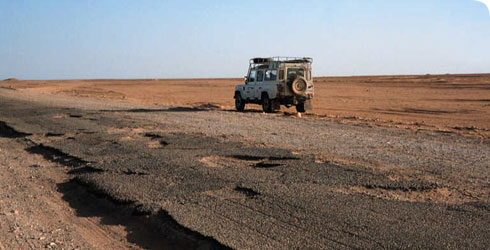General effects
Climate change will affect all life as we know it today. Along with factors like pollution and habitat loss, it will have a significant impact on the planet's biodiversity.
Here are some of the consequences of climate change that scientists are predicting. The scale of these consequences is not yet certain. By taking action to reduce our environmental impact, it is possible to lessen the extent of the damage.
Worldwide, storms and hurricanes are expected to increase in intensity.
Sea level rise
As the ocean heats up, it will expand. This will make sea levels between 20 and 60cm higher by 2100. Sea level rise will cause flooding in low-lying cities such as New Orleans, Venice, Mumbai, Amsterdam, London and New York.
At the same time, the poles are warming up and making the ice melt in the Greenland and Antarctic ice caps. The run-off water adds to sea levels, causing them to rise further.
The total increase is hard to predict but it could be as much as several metres. This would have disastrous consequences for coastal cities, towns and agricultural communities.
Our oceans are already rising with global warming, according to satellite images. They have been rising at 3mm per year since 1993.
Shrinking habitats
The arctic glaciers are home to polar bears, ermines (short-tailed weasels), caribou and other wildlife. They are shrinking rapidly – arctic sea ice is down during the summer months by almost one quarter since 1978.
Many scientists have warned that unless something is done, the polar bear and other species will go the way of the dodo, and become extinct as a result of human activities.
Droughts
In Africa, changing rainfall patterns will lead to water shortages. Droughts are already a fact of life in Africa – the Sahel drought of the 1970s and 80s claimed around 200,000 lives. These deep, persisting droughts will become more prevalent, especially in southern and western Africa.
More worrying are megadroughts, where the rains stop for 100 years or more. There haven’t been any megadroughts in the last 250 years, but hundreds of years ago, these parched the landscape, causing widespread hunger.
It’s difficult for us to imagine how we would cope with a drought lasting 100 years. But this terrifying prospect becomes more likely as temperatures rise.
Effects on plant life
Studies have shown that plants in carbon dioxide enriched environments tend to have reduced nutritional value. Tougher leaves and higher concentration of defense chemicals such as tannins and phenolics make them a poor food source.
Spreading disease
In some places in Asia and Africa, where the changing climate becomes warmer and wetter, tropical diseases which thrive in warm and moist conditions will become more common. These include cholera, malaria, dengue, and Rift Valley fever.
And these diseases will spread to new places – in Europe, scientists expect to see outbreaks of malaria and other tropical diseases.
Consequences for the developing world
Poor countries such as Bangladesh will be worst affected because they do not have the money to tackle new problems and more serious flooding, crop failure and insect-borne diseases.
Richer countries, however, will face disastrous consequences too. A heat wave in 2003 killed 19,000 people across Europe. Such extreme events will become more common as the temperatures rises.
Consequences for Britain
Flooding in Britain has worsened in recent years. The rainfall of June and July 2007 was about 20% higher than ever seen before and forced thousands from their homes. This could be an example of what is to come, according to climate scientists.
Large areas of the Norfolk Broads and the Thames estuary are likely to disappear by 2100 and the government is looking at ways to adapt to these changes. Scientists predict more food poisoning in the UK too as germs like salmonella thrive in warmer climes.
Toolbox

In 2003 nearly 12,000 scientists from over 60 countries came to work at the Museum.
